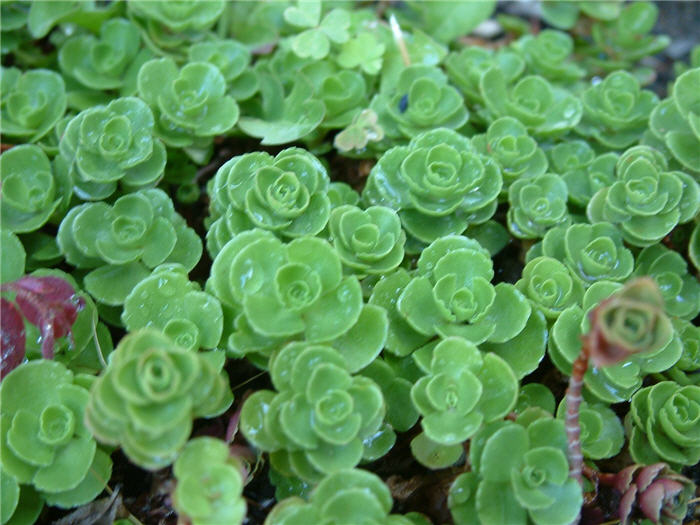| Botanical Name: Sedum spathulifolium | |
| Common Name: Pacific, Round, or Yellow Stonecrop |

-
Anatomy
-
Culture
-
Design
Plant Type
Ground cover, Succulent
Height Range
Under 1'
Flower Color
Yellow
Flower Season
Summer
Leaf Color
Grey, Purple, Red, Silver
Bark Color
n/a
Fruit Color
n/a
Fruit Season
n/a
Sun
Full, Half
Water
Low
Growth Rate
Slow
Soil Type
Sandy, Clay, Loam, Rocky, Unparticular
Soil Condition
Average, Poor, Well-drained, Dry
Soil pH
Neutral, Basic
Adverse Factors
Attracts Bees
Design Styles
English Cottage, Meadow, Ranch, Seascape, Spanish, Tropical
Accenting Features
Showy Flowers, Unusual Foliage
Seasonal Interest
Spring, Summer, Fall
Location Uses
Perennial Border, Parking Strip, Swimming Pool, Walkways, With Rocks
Special Uses
Container, Small Spaces
Attracts Wildlife
Butterflies
Information by: Stephanie Duer
Photographer:
Photographer:
-
Description
-
Notes
This species of sedum is quite low, usually under 4 inches. Leaves are somewhat rounded, thick and fleshy with a unusual white powdery coating which lends a white to grey-green appearance. In early summer, they produce flat-topped clusters of yellow flowers. In autumn, leaves often turn reddish to purplish. In fact, this plants foliage seems to change color constantly all year round. They are particularly well suited for mixing among Sempervivums and other low stonecrops in the rockery, front of the perennial border or alpine troughs.
This species of sedums is native to western North America. For a sedum, they can tolerate considerable moisture, as long as it doesn't gather around their crowns, yet they are also drought-tolerant. They grow in sun to part sun, in well drained soil. In bloom, sedums attract bees and butterflies. Sedums are attractive groundcovers, but they are very brittle, so use in areas of low or no foot traffic, or at the edges of walkways. As a group, sedums prefer well-drained soils, including sandy-loam, clay-loam, or rocky soils, as long as it is well drained. In nature, most sedums occur in light shade or partly sunny sites, while a few are also well-adapted to full sun situations. They can tolerate both drought conditions or more frequent watering, but the key is good drainage. Their xeric nature makes sedums popular for use in rock gardens, roof gardens, wall gardens, and living wreaths.